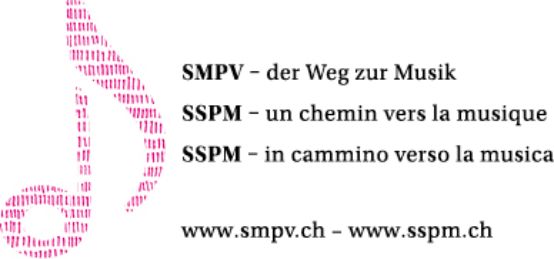The history of the SSPM: from 1893 to 1939

In the summer of 1892, three musicians gathered at a singing festival to discuss the shortcomings of musical training in Switzerland. This was the starting point for the creation of the Association Suisse des Maîtres de Chant et de Musique, forerunner of the SSPM.
At a singing festival held in the summer of 1892 in Birsfelden (Basel), Ferdinand Schneeberger from Biel, Johann Jakob Rosenmund from Liestal and Heinrich Kunz from Bubendorf, all three musicians and music teachers, discussed the current state of music and music education in Switzerland1. Their verdict was categorical: Swiss music schools were underdeveloped, school singing was in poor health and the general level of musical life left much to be desired. The only way to close the huge gaps in musical training is to bring all singing and music teachers together.
A year later, preparations were sufficiently advanced for the Swiss Association of Singing and Music Masters (Schweizerische Gesang- und Musiklehrerverein SGMV) to be founded on October 1, 1893 at the Gotthard restaurant in Olten.
The SGMV's main focus was to encourage singing in schools, and to organize singing competitions with choirs. By 1899, the SGMV was already organizing choral conducting courses, which attracted considerable interest and support from the cantons. In 1903, for example, they were attended by 124 participants from 20 cantons.
In 1906, the first course for organists was held. It lasted for two years, with half-day lessons for eight weeks a year. As the SGMV organ points out, the need to offer this course was unfortunately confirmed "in a painful way". For the young association, it was a period rich in initiative and the pleasure of experimentation. Its confidence in its professional knowledge is reflected in the freedom of its contacts with the authorities in charge of education.
In 1911, 18 years after its foundation, the continuing development of music pedagogy activities led the association to adopt a new name and new statutes: the Swiss Society for Music Pedagogy (SSPM) was born. The new statutes considerably expanded the association's tasks in the field of music pedagogy, and membership was already more strictly regulated: "The Society seeks the association of all singing and music teachers, conductors, organists, performers and authors of works on music with the aim of improving music education as a whole, promoting music in public life and improving the status of music teachers."
This same meeting also laid the foundations for SSPM professional training. Launched in 1913, it marked the start of a success story based on a decentralized, individual training model that had no equivalent in Switzerland or internationally. As a sign of this new self-confidence, Feuillets suisses de pédagogie musicale is separated from Revue musicale suisse and becomes an independent publication.
Five years later, in 1916, the association's activities were finally extended to French-speaking Switzerland, and the French name Société Suisse de Pédagogie Musicale was added to the statutes. The association now had 550 members.
At the same time, the range of services for members was also considerably expanded. The SSPM regularly offered a job exchange in Feuillets de pédagogie musicale, and also built up a score library. And right up to the 1920s, it even ran consultation centers for concert organization, to which members could turn rather than to professional agents or organizers. By 1919, no fewer than 80 such centers had been set up in Switzerland.
The emergency fund was also an integral part of the assistance offered to members. Since 1940, members have also been able to benefit from legal advice. As today, this service was limited to music teachers, and the first sessions were free of charge.
The expansion of activities to many parts of Switzerland is making it more and more difficult to take local circumstances into account. Up to now, the SSPM has been run on a highly centralized basis, but this model is now reaching its limits. There is a growing awareness that certain tasks, such as organizing training courses and concerts, setting tariffs in line with local customs, or discussing issues of local politics, would be much easier to handle at regional level. In 1923, the General Meeting therefore decided to allow certain local societies, known as local groups, to join the SSPM. It would be a good ten years before the first made use of this possibility: in 1933, the Musikpädagogische Vereinigung Bern, already founded in 1918, joined the SSPM as a local group in Berne.
Others followed suit in subsequent years: Solothurn and Zurich in 1934, then St. Gallen, Basel, etc. The first local group in French-speaking Switzerland was the Groupe Vaudois, founded in 1942, as was the Ticino section.
Coexistence with local groups had a lasting impact on the association's work, requiring a great deal of discussion and exchange. To meet this need, the Delegates' Meeting was introduced in 1939.
In June 1939, an Extraordinary General Meeting adopted new statutes that added an important element to the SSPM's identity: its role as a professional association. In the tense economic climate of the time, and on the eve of the Second World War, the association intended to intensify its political commitment to the working conditions of music teachers, which also led it to apply membership rules more restrictively, notably in order to protect the SSPM title. In so doing, it laid the foundations for the development of a modern professional association which, after the Second World War and right up to the year 2000, saw a steady increase in its membership.








